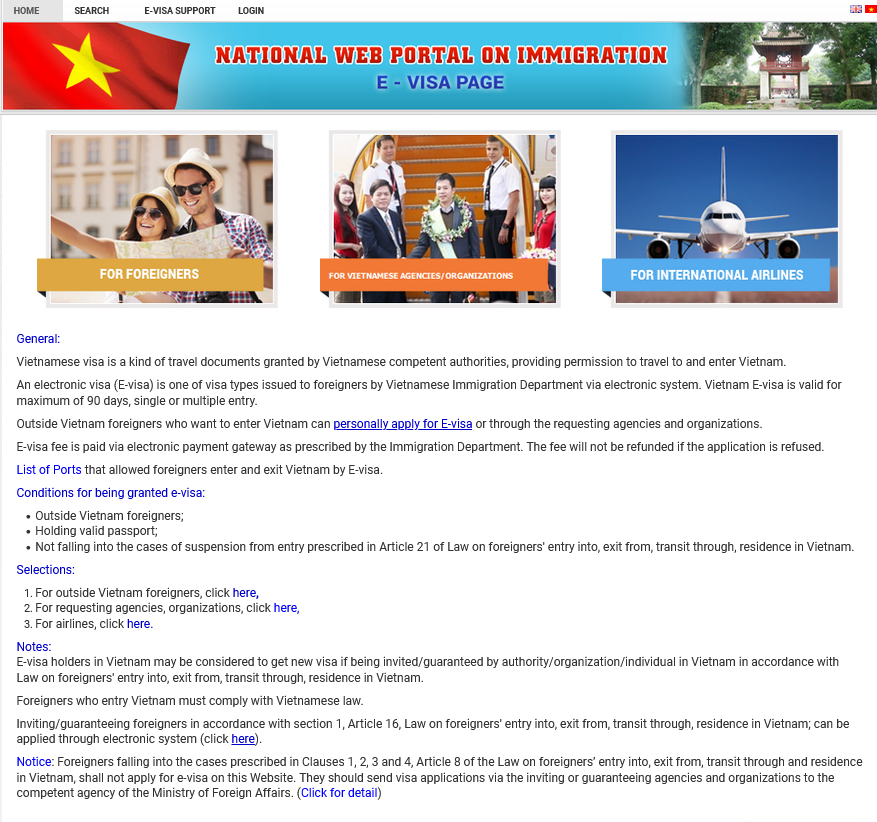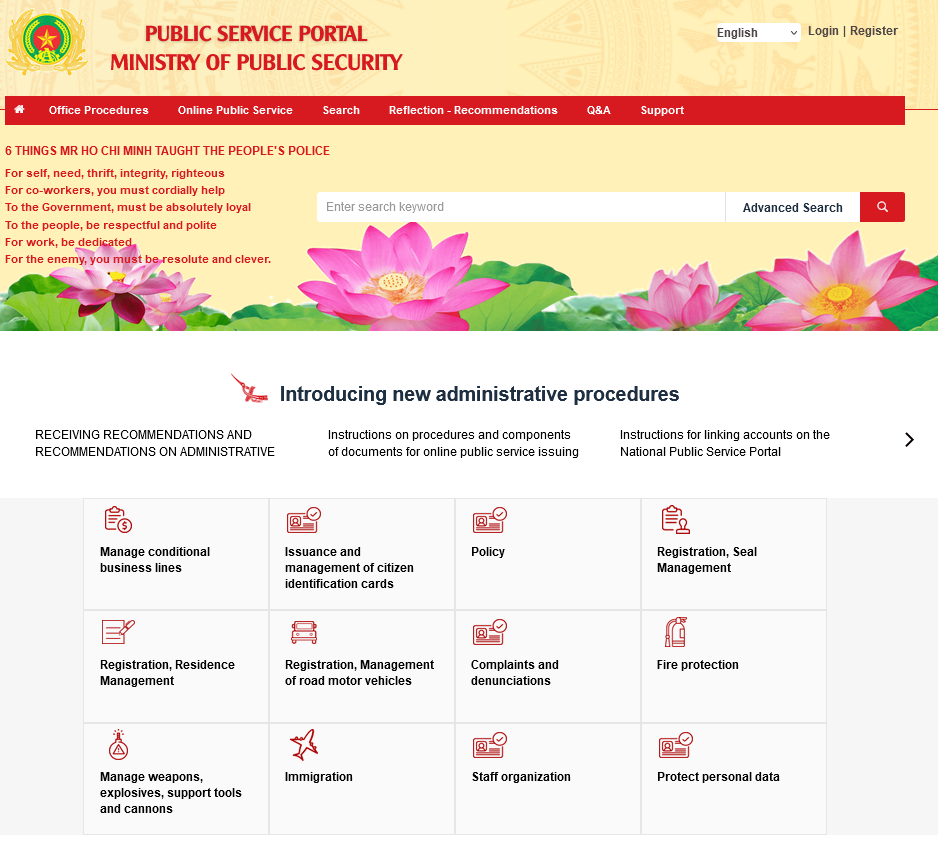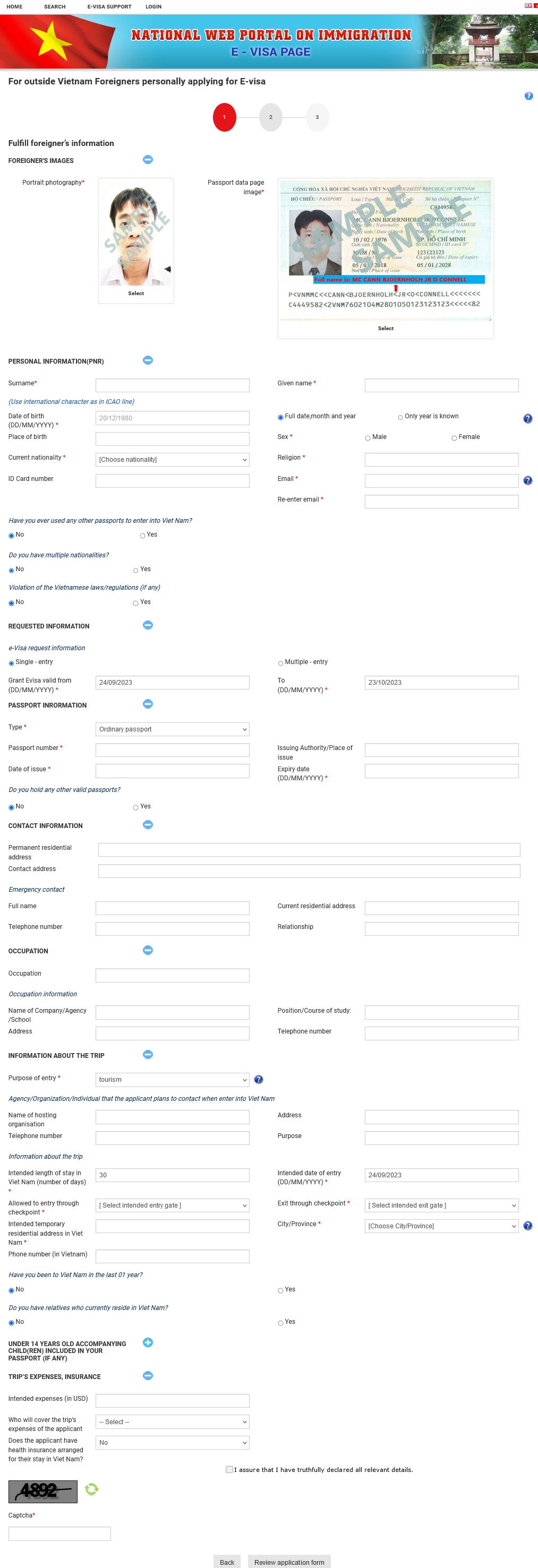How to Apply for a Vietnam E-Visa in 5 Minutes

It is extremely convenient to apply for a Vietnam e visa from anywhere in the world as long as you have an Internet connection. If you are planning a trip to Vietnam, prepare to apply for an e visa right now.
Don’t forget to check out the ultimate guide to Vietnam travel visa. Now we are going to walk you through some key features of a Vietnam e-visa and the application process with just 5 minutes and a few clicks.
Contents
What is a Vietnam electronic visa?
According to the official website of the Immigration Department, an electronic visa (e-visa) is a visa issued to foreigners by the Vietnamese Immigration Department via an electronic system.
Vietnam e-visa requirements
Under the Government’s Resolution No. 79/NQ-CP dated May 25, 2020, only citizens from 80 countries are eligible to apply for a Vietnam e visa. However, the new Resolution No. 127/NQ-CP, dated August 14, 2023 confirms the availability of e-visa to citizens from ALL countries and territories.
This is to boost the nation’s tourism and reassure that Vietnam is a more accessible and appealing destination for travelers around the world.
To be able to be granted the visa, applicants should meet the following requirements:
- Foreigners not living in Vietnam
- Hold a passport valid for at least six months from the expected date of entry
- Not being suspended from entry outlined in Article 21 of Law on foreigners’ entry into, exit from, transit through, and residence in Vietnam
The e-visa validity
This type of visa is valid for a maximum of 90 days ̣̣(previously 30 days) with single entry or multiple entries. In the past, an e-visa could be extended in Vietnam, but the extension has been suspended until further notice.
Vietnam e-visa vs visa on arrival
Many travelers have concerns over whether to apply for an e-visa or a visa on arrival. Here are some key differences between these:
| Vietnam e-visa | Vietnam visa on arrival (entry permit) | |
| Types of travelers | Travelers from all countries and territories | Travelers from all countries and territories via a local travel agency |
| Types of visa | Single & Multiple | Single & Multiple |
| Ports of entry | 42 ports of entry (airports, land borders and seaports) | Airports only |
| How to apply | Via Vietnam e visa official website | Via a local travel agency |
*NOTICE: Vietnam visa on arrival is actually different from other typical visas on arrival from some other countries. You will not obtain a visa issued upon landing at the entry point. Instead, you still have to get a valid entry permit (or Vietnam entry approval letter or Vietnam entry permit) prior to your trip. So up to now, if you are not a citizen from countries with a Vietnam visa exemption, consider e-visa first.
» See more on Vietnam Visa Requirements 2023: Do You Need a Visa To Go to Vietnam?
Valid ports of entry
The e-visa is valid for entry at any of the 42 international checkpoints in Vietnam, including 13 airports, 16 land borders and 13 seaports.
International airports:
- Cat Bi International Airport (Hai Phong)
- Cam Ranh International Airport (Khanh Hoa)
- Can Tho International Airport (Can Tho)
- Da Nang International Airport (Da Nang)
- Noi Bai International Airport (Ha Noi)
- Phu Bai International Airport (Hue)
- Phu Quoc International Airport (Kien Giang)
- Tan Son Nhat International Airport (Ho Chi Minh City)
- Van Don Airport (Quang Ninh)
- Tho Xuan Airport (Thanh Hoa)
- Dong Hoi Airport (Quang Binh)
- Lien Khuong Airport (Lam Dong)
- Phu Cat Airport (Binh Dinh)
» See more on A Traveler’s Guide to International Airports in Vietnam
Land borders:
- Tay Trang (Dien Bien Province)
- Mong Cai (Quang Ninh)
- Huu Nghi (Lang Son)
- Lao Cai and Na Meo (Thanh Hoa)
- Nam Can (Nghe An)
- Cau Treo (Ha Tinh)
- Cha Lo (Quang Binh)
- La Lay and Lao Bao (Quang Tri)
- Bo Y (Kon Tum)
- Moc Bai and Xa Mat (Tay Ninh)
- Tinh Bien and Vinh Xuong (An Giang)
- Ha Tien (Kien Giang)
Seaports:
- Hon Gai and Cam Pha (Quang Ninh)
- Hai Phong, Nghi Son (Thanh Hoa)
- Vung Ang (Ha Tinh)
- Chan May (Thua Thien Hue)
- Da Nang
- Nha Trang (Khanh Hoa)
- Quy Nhon (Binh Dinh)
- Dung Quat (Quang Ngai)
- Vung Tau (Ba Ria Vung Tau)
- Ho Chi Minh
- Duong Dong (Kien Giang)
» See more on Ho Chi Minh City & Vung Tau Shore Excursions
Step-by-step instructions
The Vietnam e-visa application is not too complicated to complete. Have a question like ‘How do I get an e-visa for Vietnam?’ All you have to do is to prepare the necessary documents and read the instructions carefully.
Step 1: Visit the application link
Applicants can access the Vietnam e-visa official website by going to either link:
- https://evisa.xuatnhapcanh.gov.vn/en_US/trang-chu-ttdt (by the Vietnam Immigration Department)

The screenshot of the national portal on immigration | © Vietnam Immigration Department
Choose “For Foreigners”, tick the confirmation of reading then click “Next”.
- https://dichvucong.bocongan.gov.vn/bocongan/bothutuc/tthc?matt=26277 (the Ministry of Public Security)

Choose “Immigration” then choose “Procedures for issuing electronic visas at the request of foreigners”. Then click “Submit application” and click “Have read, understood and submitted the application”.
After that, you will be directed to the data page.
Step 2: Upload your images and fill out the application form

Before inputting your personal data, you have to upload 2 images. One is your portrait photo and the other one is your passport data page. Double-check the visa photo requirements and make sure your data page is clear.
Next, proceed with the data fields including:
- Personal information
- Requested information
- Passport information
- Contact information
- Information about the trip
- Under 14 years old accompanying child(ren) (if any)
- Trip’s expenses, insurance
All the information with (*) must be completed. Remember to provide the correct entry/exit checkpoint. The port of entry on your e-visa is unchangeable. That means you cannot change it after submitting your Vietnamese e-visa application or after your visa is issued.
Review your application form carefully and then click “Submit”. Upon the successful submission, there will be a registration code sent to your email for later status check.
Step 3: Pay the e-visa fee
To pay the fee, you must have a valid international credit or debit card (Visa, Mastercard, JCB or American Express).
Step 4: Check for the Vietnam e-visa status
After making payment, you can check the application status by the following links:
- https://evisa.xuatnhapcanh.gov.vn/en_US/tra-cuu-thi-thuc
- https://dichvucong.bocongan.gov.vn/bocongan/tracuu
Enter the code you received to see whether your e-visa is granted or not. If the visa is ready, print it out into two copies and bring it along with you.
Vietnam e-visa processing time & cost
The Vietnam e-visa typically takes 3 working days to be issued. However, it is normal if the e-visa processing time is longer than 3 working days. The reasons for delays may come from a large number of applicants or it is Vietnamese public holidays. We recommend you apply at least 7-10 days in advance.
The Vietnam e-visa cost is $ 25 for a single-entry e-visa or $ 50 for a multiple-entry entry e-visa. The fee is paid once via the payment gateway and not refunded if the application is refused.
See more on Vietnam Travel Tips: Know Before You Go
FAQ on the visa application
Here are some common concerns that applicants have during their application process.
1. What are the requirements to apply for Vietnam e-visa for US citizens?
US citizens are expected to follow the same procedure to be granted an e-visa. You should prepare a valid passport and a 4 x 6 portrait photo, fill out the application form and complete online payment.
2. Can I enter Vietnam through Nha Trang Port with an e-visa?
Yes. You can enter Vietnam through 42 points of entry including seaports. If your e-visa shows Nha Trang Seaport as your entry point, you can proceed with the immigration procedure without any problems.
See more on Q&A Nha Trang Travel Guide: Is Nha Trang Worth Visiting? | Maika Tours
3. Can I get a refund if my e-visa is refused?
No. It is officially stated by the Immigration Department that the e-visa fee is non-refundable. You cannot get your money back in case your e-visa is not issued. For incorrect port of entry/ exit or unused visa, you cannot get the refund either.
4. Where is my registration code?
You will find the registration code sent to your email. Remember to save it as you will need it to check your application process.
5. Do I have to print out my e-visa?
Yes. It is advised that you should print your Vietnam e-visa as well as keep a downloaded copy on your phone.
See more on 10 Tips for Your First Trip to Vietnam
From stunning scenery and ancient temples to bustling cities and delicious food, Vietnam is sure to amaze you. And traveling to Vietnam is much easier than ever with a Vietnam e visa. Click and click – you have everything prepared for your next trip.
© Maika Tours
Trinh Tran